Scoop Horses
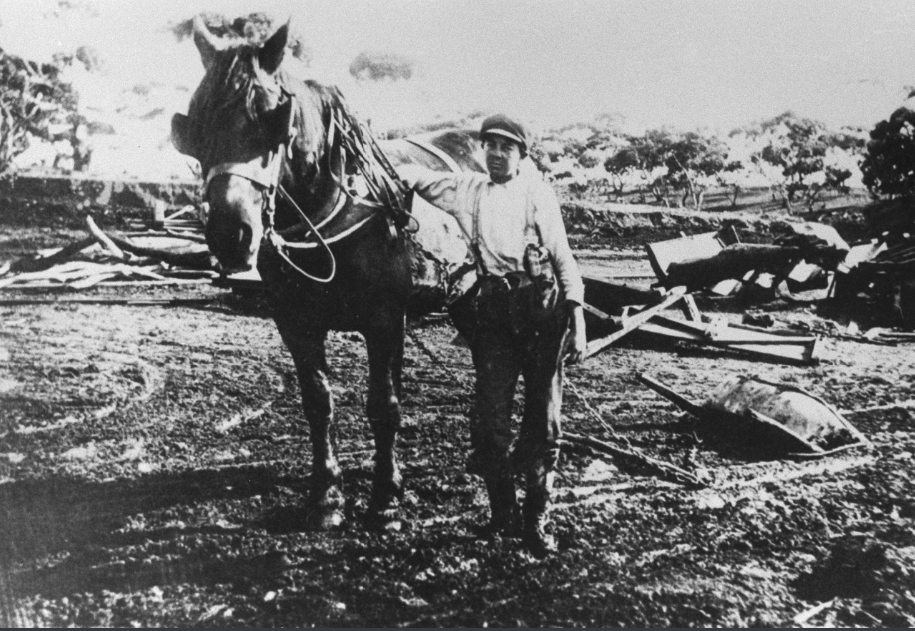
From Waler Data Base @FaceBook. Image: ‘Jack McLeod and his scoop horse Jimmy at work on the construction of the Tod River Reservoir. 1922.’ State Library SA.
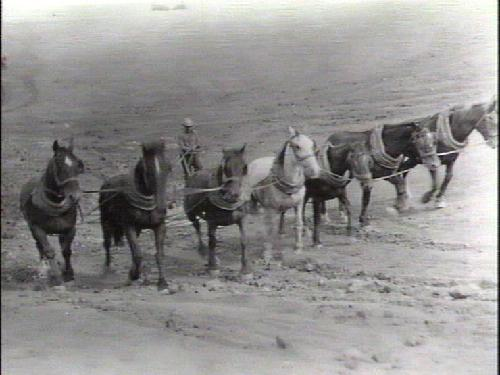
Scoops were a bit of horse drawn equipment used to scoop up earth, sand, rocks, gravel, mud or snow. These days a bulldozer pushes it out of the way, however a scoop horse pulled it out of the way. There were several types of scoops. Some were a simple big open-mouthed type simply dragged along, some with wheels each side. A single strong horse or pair could pull a scoop. Snow and mud scoops had sled skids instead of wheels. Other scoops were large – although basically the same principle – fill was collected and moved. Other earth moving implements were not scoops at all but scrapers – graders – the dirt being pushed and angled away, although sometimes referred to as scoops too, technically not.
Image: ‘Horse teams being used to scoop off soil and cart rocks in what appears like an open cut or clearing operation, possibly for a dam.’ Territory Stories
The horse drawn scoop usually followed a ripper, also horse drawn, which ripped the hard ground up. Then the scoop collected the fill (dirt etc). Once full, the scoop was taken to the dump spot, the handle lifted, and the fill tipped out. A grader usually followed to level it all out to required angle.
Scoops were used for many jobs such as leveling building sites – old Parliament House in Canberra is on a site leveled by horses pulling scoops. Also used to make water reservoirs for towns and cities, dams, irrigation channels, open-cut mines, roads and our railways.
Incidentally, the slang term ‘scoop-boy’ in our Victorian times, didn’t mean horse drawn scoops at all, but youths – mostly children – in our cities employed on very low wages, to gather up horse poop from the streets in hand-held scoops, dodging in and out of the horse traffic, a dangerous job yet a term used in a derogatory way as they were bottom of the heap, job wise.
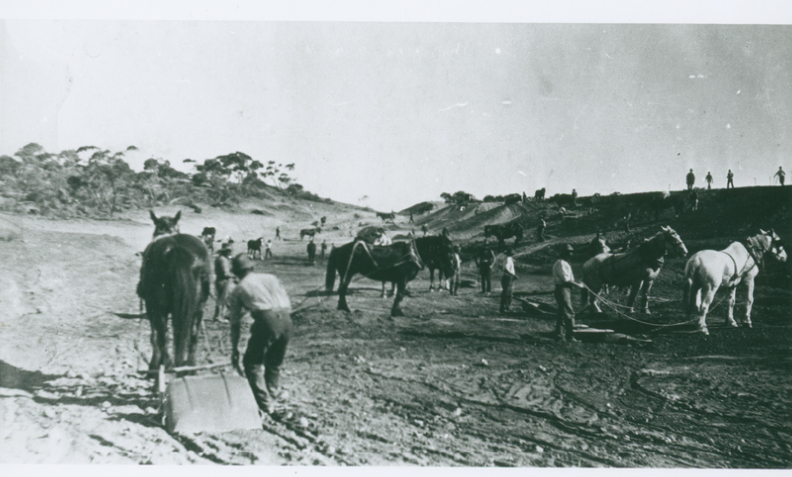
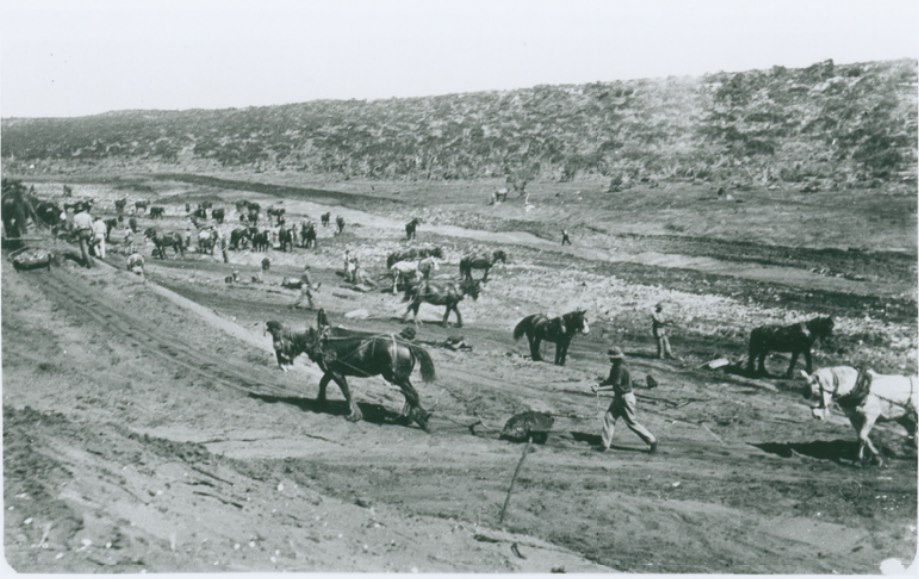
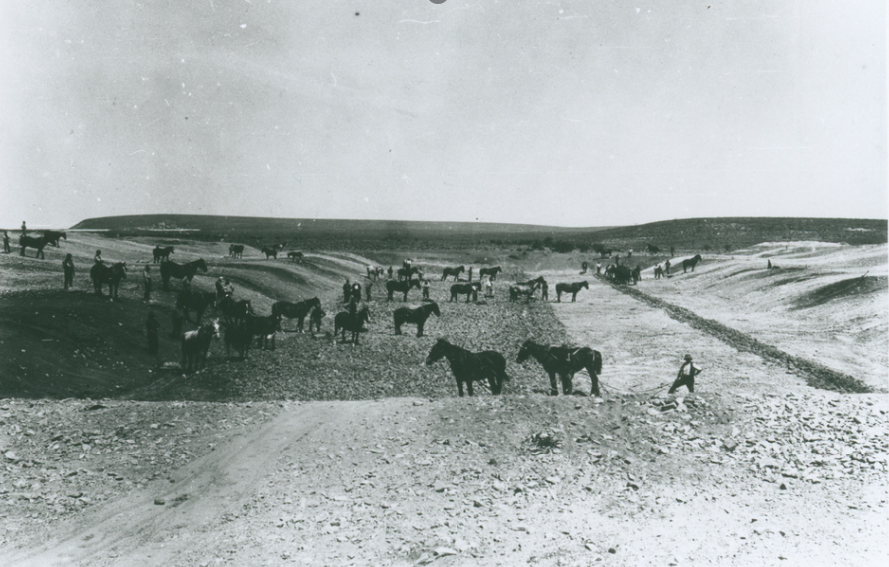
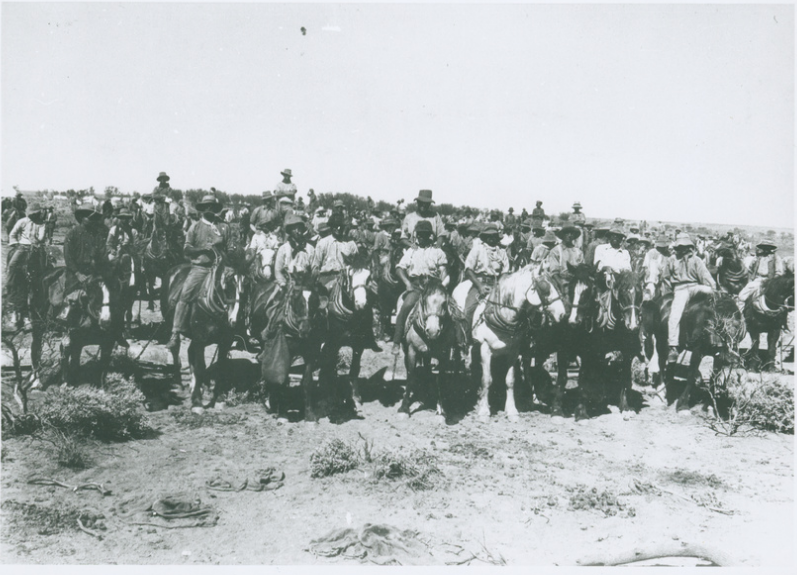
Images: Scoop horses. Kalgoolie – Port Augusta railway construction. 1912. State Library SA.
Last image is the 185 scoop horses and the men who worked them.